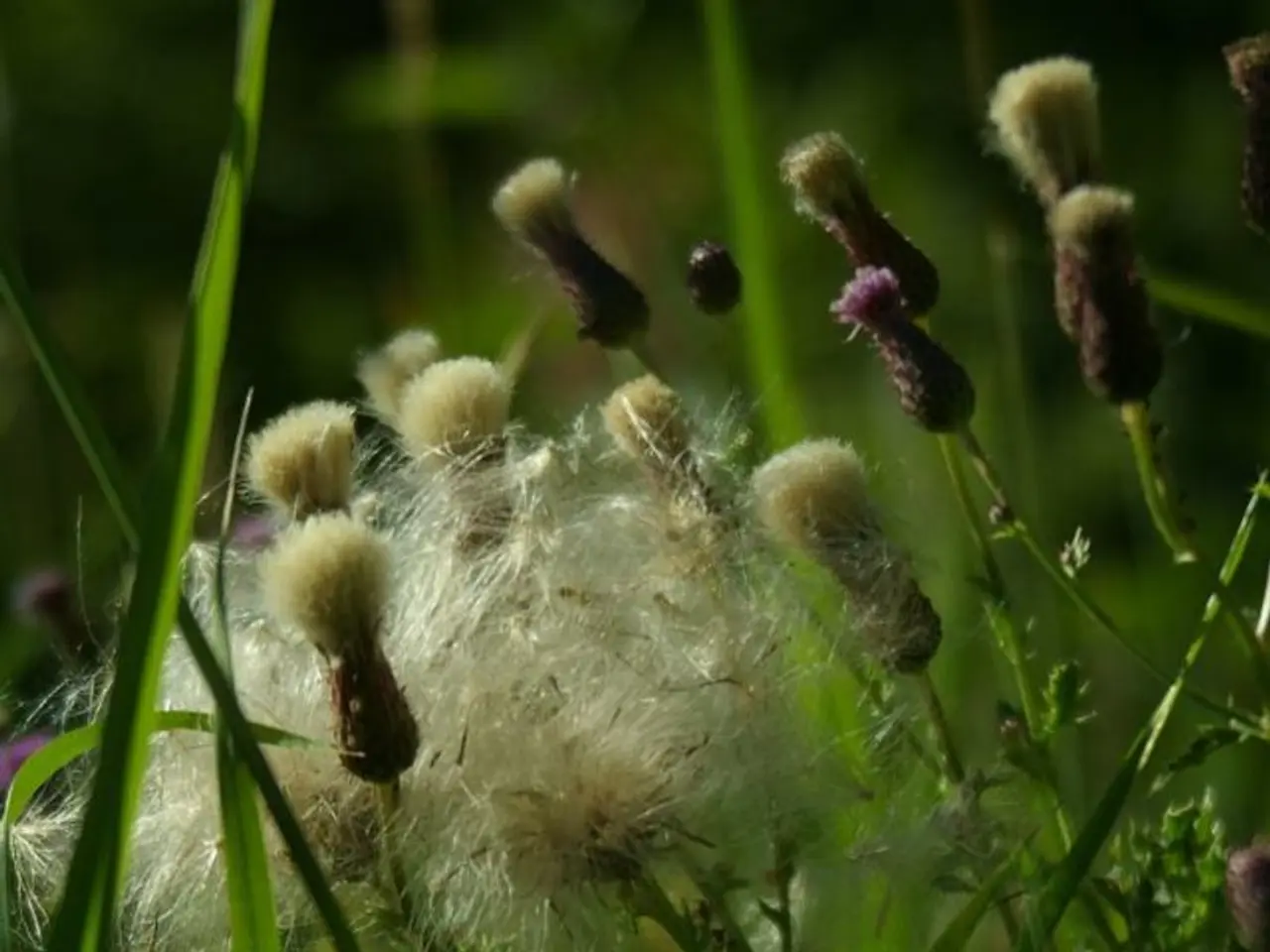Applying Lawn Fertilizer: A Comprehensive Guide on Timing and Procedure
Caring for Your Lawn: Optimal Fertilization Timing for a Healthy Lawn
A lush, green lawn is a welcome sight, adding beauty and value to any home. But maintaining a healthy lawn requires careful attention, and one crucial step is fertilizing at the right time. Here's a guide to help you understand when and how to fertilize your lawn for optimal results.
The ideal season for lawn fertilization is spring and fall. The optimal time to fertilize cool-season grasses, such as Kentucky bluegrass, perennial ryegrass, and fescues, is in early spring, after you have mowed your lawn twice. This timing helps the lawn recover from winter and ensures the grass can effectively use the nutrients [1]. On the other hand, warm-season grasses, such as Bermuda, zoysia, and St. Augustine, should be fertilized in late spring when the grass is fully green and actively growing, usually when daytime air temperatures reach about 80°F [1][5].
General guidelines for fertilization: It's essential to avoid fertilizing too early in spring before grass actively grows, and to avoid fertilizing during stressful periods like summer drought or late in the growing season [1][4]. Some experts use a rule of thumb to fertilize after mowing the lawn twice in spring [1]. When applying "weed and feed" products, the ideal time is when soil temperatures range between 60 and 80°F, roughly from mid-March to May, to target weeds effectively in cool-season grass areas [3].
Excessive fertilization can harm your lawn. Too much fertilizer can cause brown patches with crunchy yellow leaves on the lawn, burn leaves, promote excess growth, and encourage thatch build-up [2]. To prevent this, always follow the directions on the fertilizer package for proper application. Using mulched grass clippings can help control excess soil and provide strong roots in case of excessive fertilization [3]. It's not ideal to put fertilizer on a wet garden, as this may cause burning. Wait until the grass is dry before applying fertilizer for best results [4].
Choosing the right fertilizer: The right fertilizer choice depends on grass type, climate, and sun/shadow exposure. Both liquid and dry granular fertilizers are common choices for lawns, with different properties and application methods [6]. Soil testing before fertilization is important to avoid a patchy, yellow lawn [7]. Organic fertilizer, such as poultry litter, is an environmentally friendly way to improve soil quality and yield [8].
Organic fertilizer should be applied from May to September when temperatures are warmer. Organic fertilizer stimulates microorganisms in the soil, making the lawn healthier and greener [9]. Even application of fertilizer is crucial for lawn health. Careless fertilization can lead to uneven application and patches of grass that are either over or under-fertilized.
By following these guidelines, you can ensure a healthy, beautiful lawn that's perfect for family gatherings, children's play, and pet roaming. Happy gardening!
[1] Lawn Care Guide: Fertilising Your Lawn [2] Excessive Fertilization Can Burn Your Lawn [3] Weed and Feed: Know Before You Go [4] Fertilizing Your Lawn: When to Fertilize and How Much [5] Fertilizing Warm-Season Grasses [6] Choosing the Right Lawn Fertilizer [7] Soil Testing for Your Lawn [8] Organic Lawn Fertilizers [9] Organic Fertilizers for Lawns
After understanding the appropriate time for lawn fertilization, you might consider adopting a home-and-garden lifestyle that includes caring for your lawn. A suitable gardening practice would be to fertilize cool-season grasses during spring, specifically in early spring after two mowings, and warm-season grasses during late spring. Additionally, applying organic fertilizer for your lawn can enhance its health and greenness, especially from May to September when temperatures are warmer.




